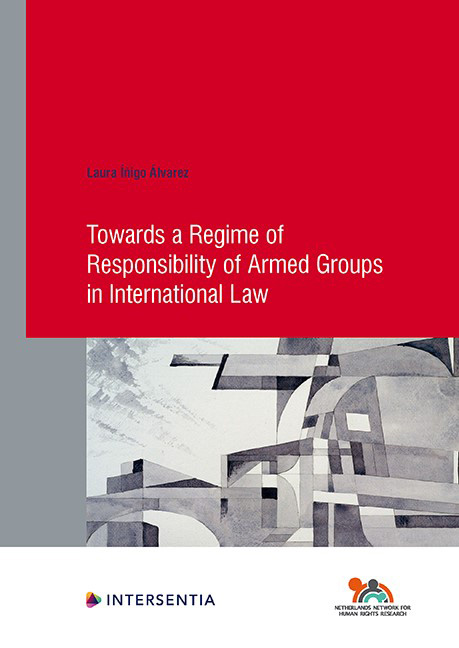Book contents
- Frontmatter
- Acknowledgements
- Contents
- Abbreviations
- Chapter I Introduction
- Chapter II The Necessity of a Responsibility Regime for Armed Groups in International Law
- Chapter III Developing a Responsibility Regime for Armed Groups in International Law
- Chapter IV Attribution of Conduct to Armed Groups
- Chapter V The Obligation to Provide Reparations by Armed Groups
- Chapter VI Conclusions
- Bibliography
- Table of Instruments
- Table of Cases
- Annex I Peace and Ceasefire Agreements
- Curriculum Vitae
- Human Rights Research Series
Chapter IV - Attribution of Conduct to Armed Groups
Published online by Cambridge University Press: 22 December 2020
- Frontmatter
- Acknowledgements
- Contents
- Abbreviations
- Chapter I Introduction
- Chapter II The Necessity of a Responsibility Regime for Armed Groups in International Law
- Chapter III Developing a Responsibility Regime for Armed Groups in International Law
- Chapter IV Attribution of Conduct to Armed Groups
- Chapter V The Obligation to Provide Reparations by Armed Groups
- Chapter VI Conclusions
- Bibliography
- Table of Instruments
- Table of Cases
- Annex I Peace and Ceasefire Agreements
- Curriculum Vitae
- Human Rights Research Series
Summary
INTRODUCTION
The previous chapter established that in order to formulate a responsibility framework for armed groups, the common principles of responsibility between states and international organisations should be considered and adjusted to the characteristics of organised armed groups, while also taking into consideration their own practice and the reports of non-judicial monitoring mechanisms. Accordingly, this chapter will analyse how these principles could be adapted and which special developments need to be contemplated. In this regard, one of the key elements that needs to be explored is the question of attribution that connects the perpetrator of violations of international law with the entity to whom they belong or whom they represent. As such, this chapter will focus on the third sub-question of the study, namely, ‘under which conditions can and should acts of formal or de facto members of an armed group be attributed to the group itself?’. To answer this question, this part follows an interpretative approach and proposes minimum standards of attribution that could be potentially applied to armed groups.
The chapter starts by exploring the concept of attribution as an essential element in ascribing international responsibility to collective entities and gives account of the academic debate on the question of attribution of conduct to armed groups. Second, it examines the substantive rules of attribution developed for states and international organisations. It provides a comparison between the two and analyses which basic rules of attribution are shared by both states and international organisations. The aim of this analysis is to determine the core principles of attribution that could be potentially applied to collective entities such as organised armed groups.
The following section will consider the application of these core principles to the conduct of armed groups and the adjustments that would need to be introduced. As explained in Chapter 3, the main special feature of armed groups is the issue of their structural disparity. This has been considered as one of the main obstacles to developing general and abstract rules for armed groups. Thus, the chapter will reflect on the different aspects of the structural organisation of armed groups, such as the concurrence of a military and a political wing, the differences between centralised and decentralised groups, and the temporal changes of structures.
- Type
- Chapter
- Information
- Publisher: IntersentiaPrint publication year: 2020

